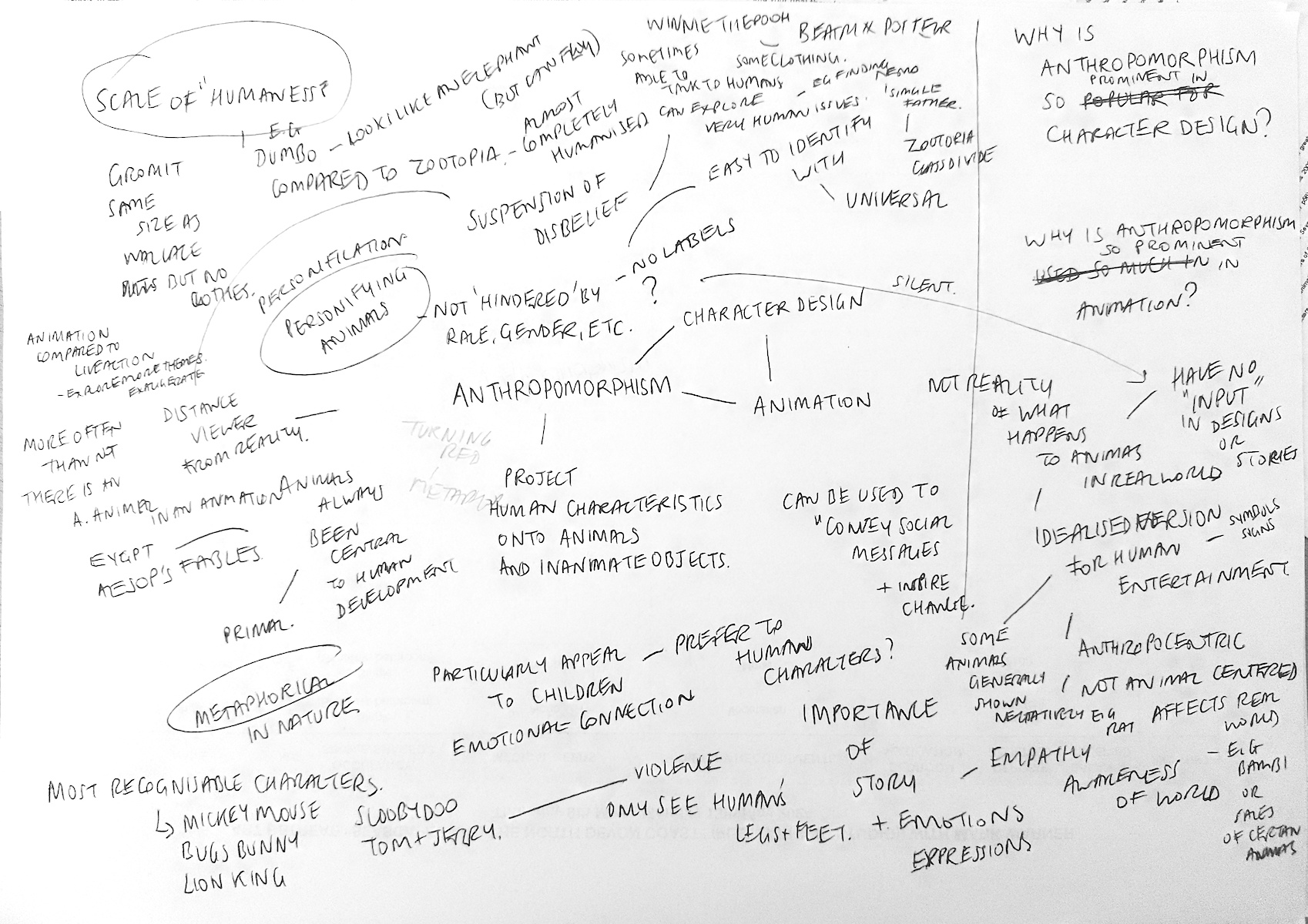Although some of my initial ideas for the Critical Review did have potential, particularly the one focusing on the representation of women in comics/graphic novels/illustration, I did not feel completely settled on any one topic. As stated previously, I work much better when I have a clear idea of what I am meant to be doing, so I found myself procrastinating to avoid confronting the task, thus making me more anxious about it.
As I was not being very productive, I finally dedicated a set amount of time to consider my plan of action. One area of illustration (and animation) that has always interested me is the use of animals as characters – anthropomorphism – so I made the decision to make this to be the topic for my Critical Review. I checked the suitability for this idea with my tutor, who confirmed it was an interesting subject to explore. Therefore, the working title of my Critical Review will be:
Why is anthropomorphism* so prominent in character design?
*In terms of this Critical Review I will just be focusing on the attribution of human characteristics to animals, rather than inanimate objects.
At this point I was relieved to have some clarity in my mind, but it is such a huge topic to cover that I was still feeling unsure of how I would approach it. I decided to do a new mind map of my current thoughts about anthropomorphism.
Whilst producing the mind map I also began collating some resources that I thought might be relevant to my work and saved these as favourites. I also used some of these to inform the mind map.
Planning the structure of the Critical Review
I need to remember that it must be a critical review and I do not end up just describing anthropomorphism.
To be continued…
Notes:
Define anthropomorphism.
Disney – allowed animal characters to be violent to one another.
Introduction – brief history – Ancient Egypt. Worship of animal gods.
Anthropomorphism in illustration (and fiction)- fables, myths, legends (e.g. half human) – defined what we think of animals.
Animals either replace humans or shown as animals with human characteristics/roles/etc.
Often preconceived personalities assigned by humans, e.g. fox will be sly/cunning, works both ways – e.g. strong as an ox.
Provides enough distance from reality to either ‘ignore’ tricky subjects of to confront/raise them in a safe way – e.g. discrimination, politics, religion, e.g. Art Spiegelman.
Animals have been integrate into human society since….
Children can identify with animals.
Anthropomorphism in animation – earliest examples of animation have involved animals – Mickey Mouse.
Scale of humanness – clothing (partially clothed? – would not happen with a human), expressions, speak, behaviour – height of characters, standing on hind legs – human legs or animal legs. Eyes – read them – human hands – thumb – instead of hooves, not private parts. Talking. Living in their natural environment or not.Humanised form in their own world or part or human world or instead of humans. Right up to human forms with animal head – bit creepy…
Issues with anthropomorphism
